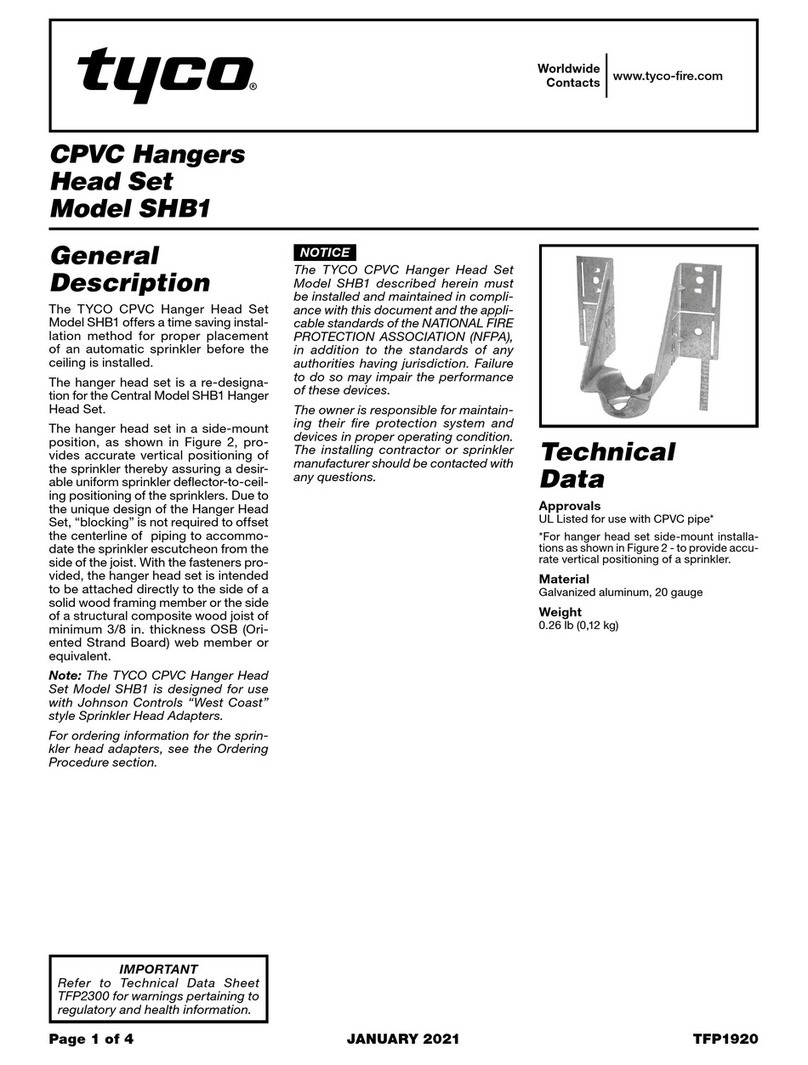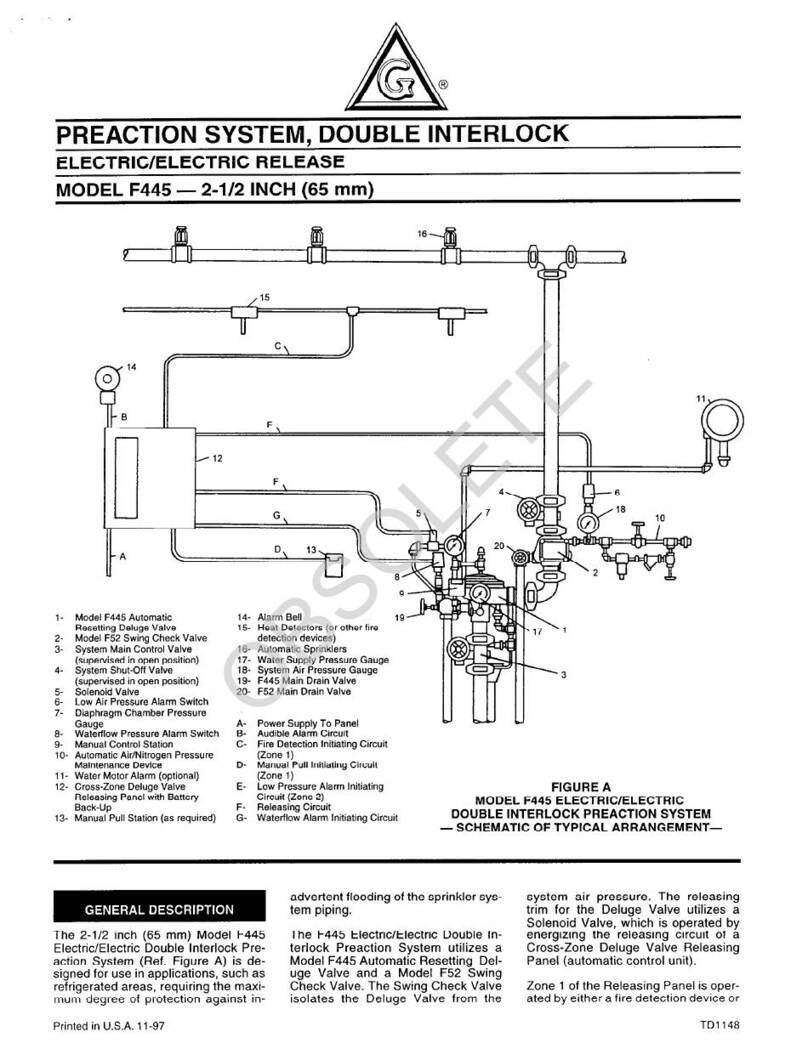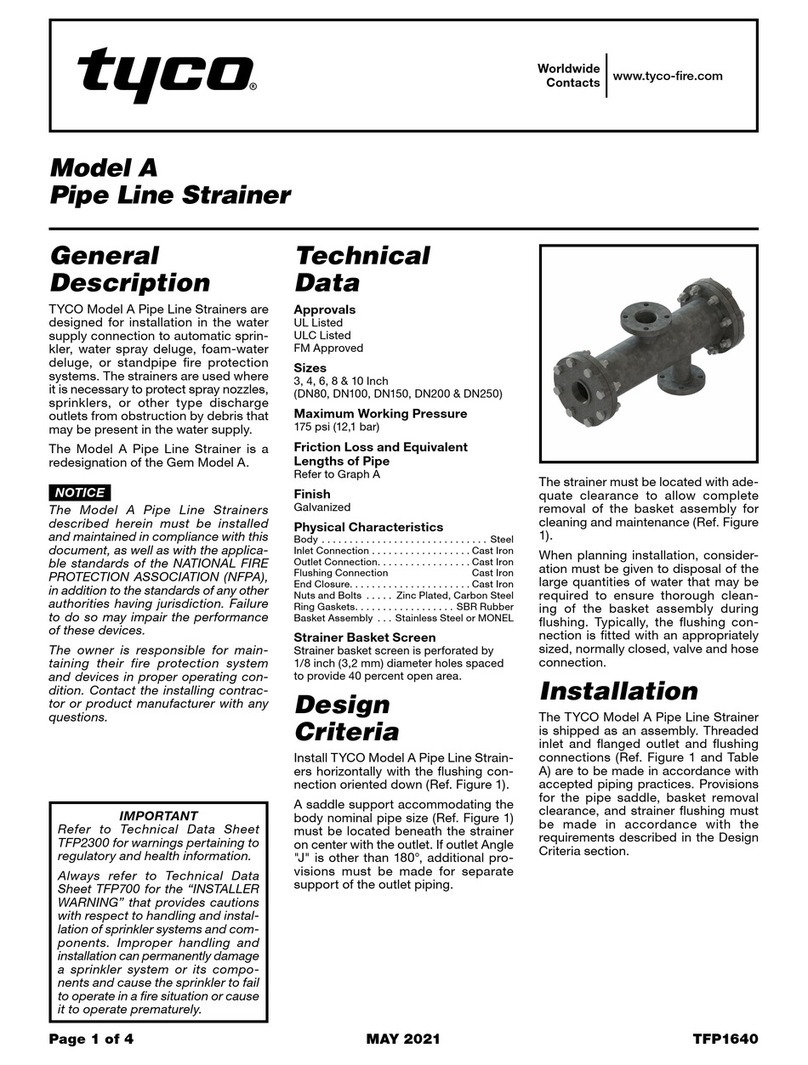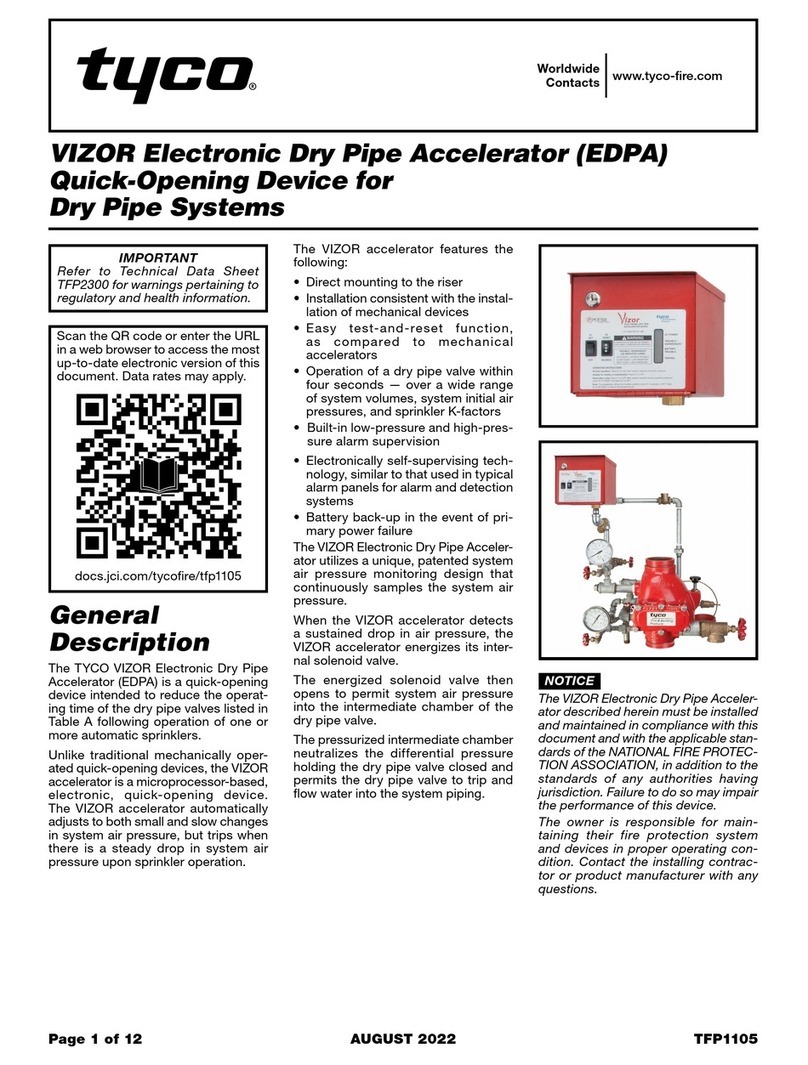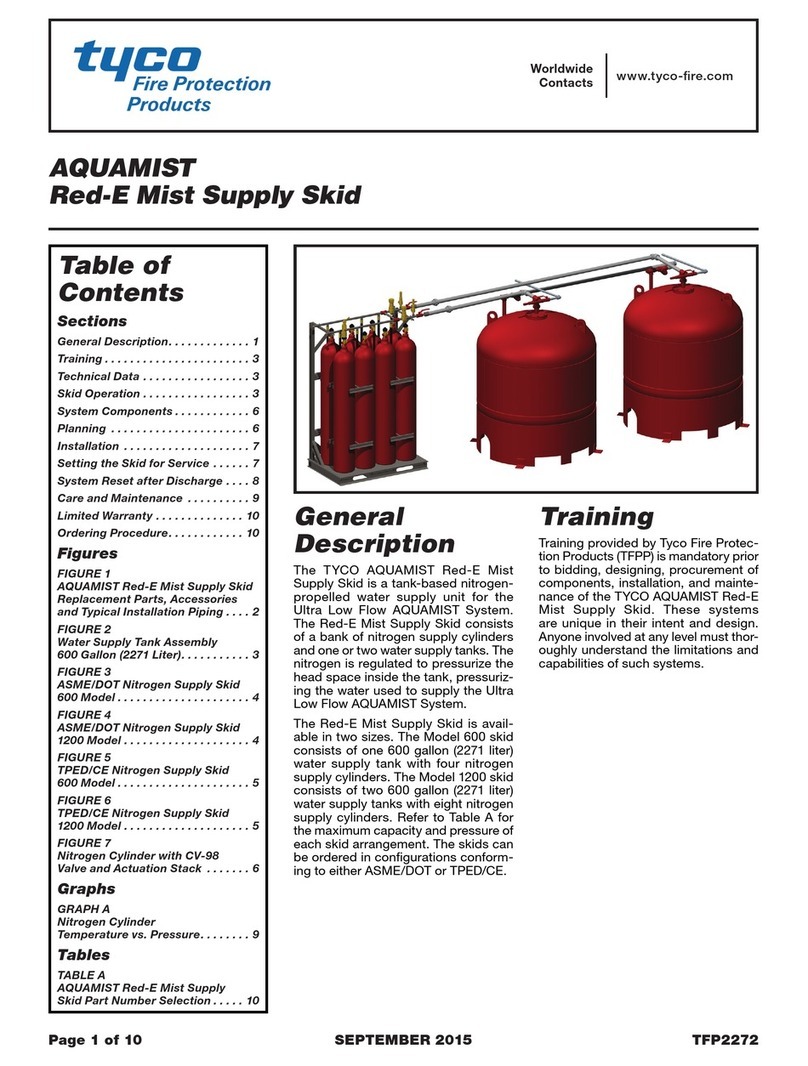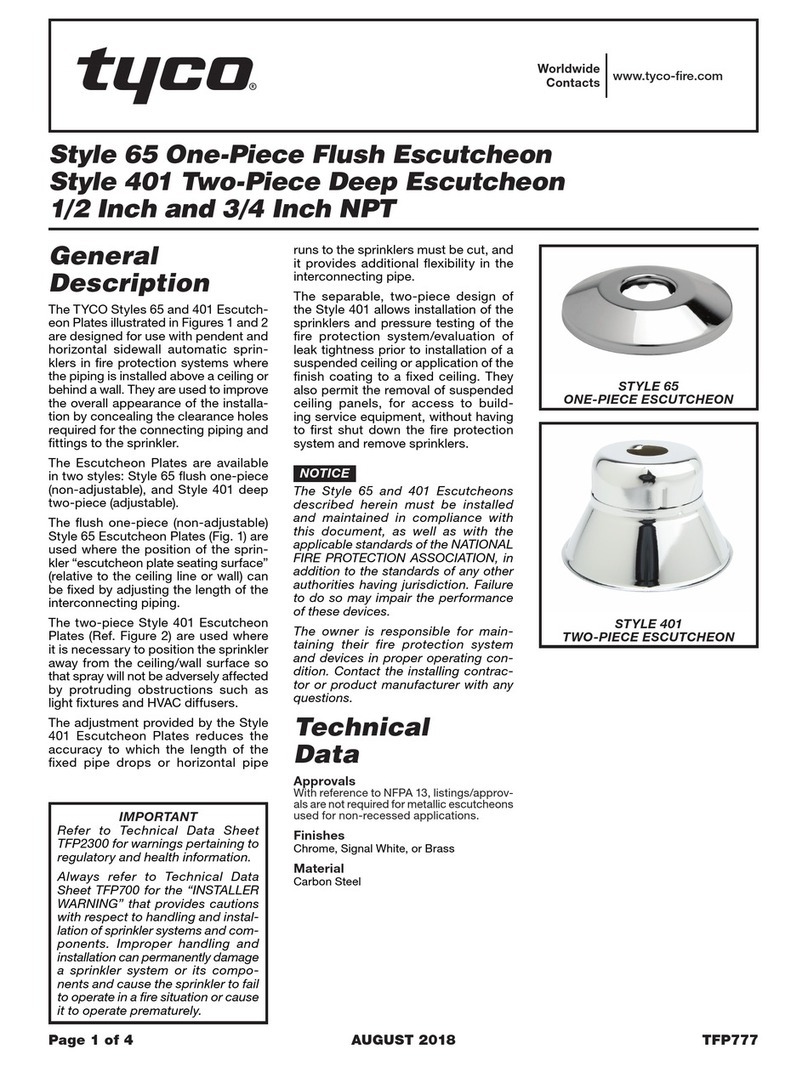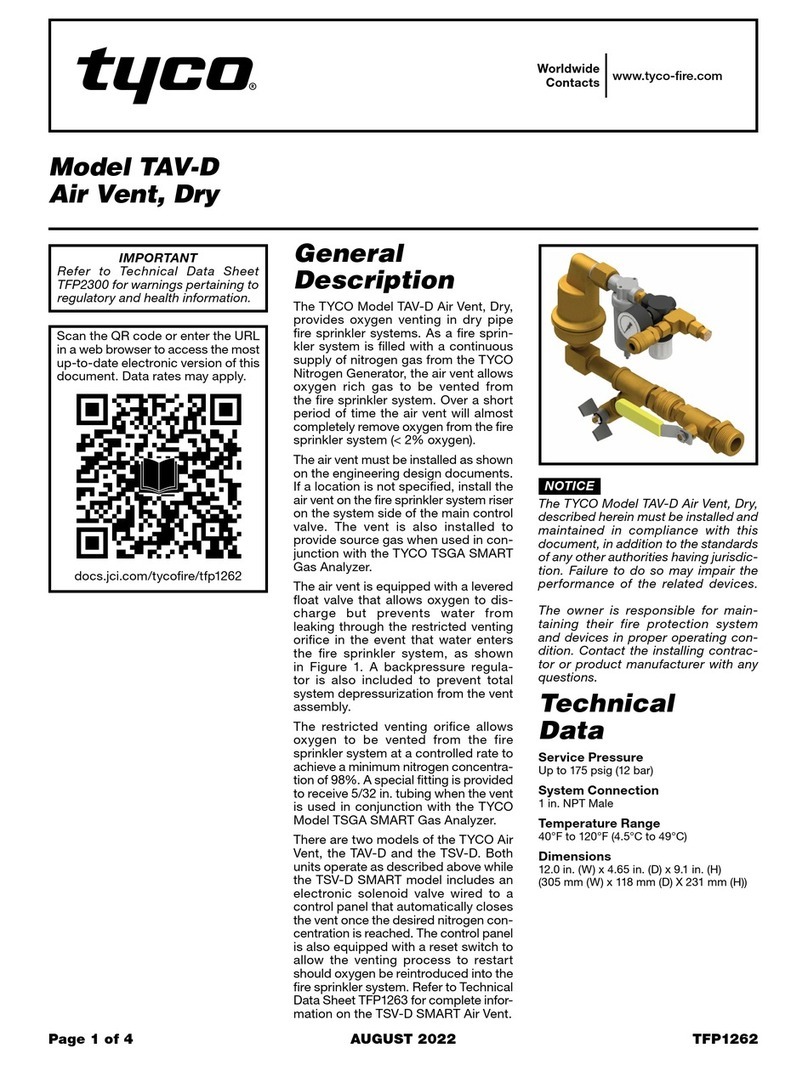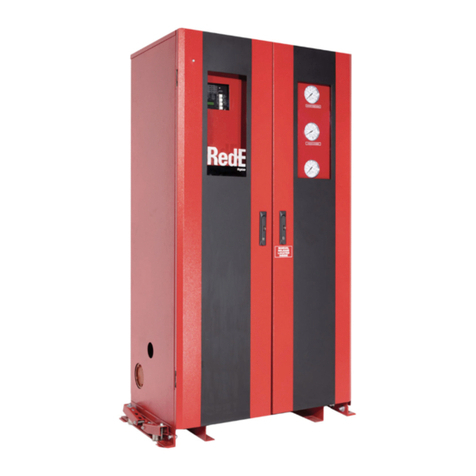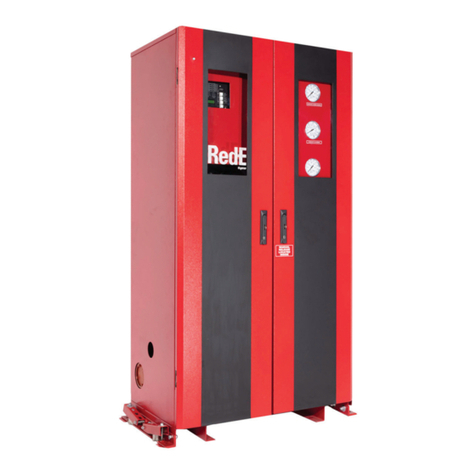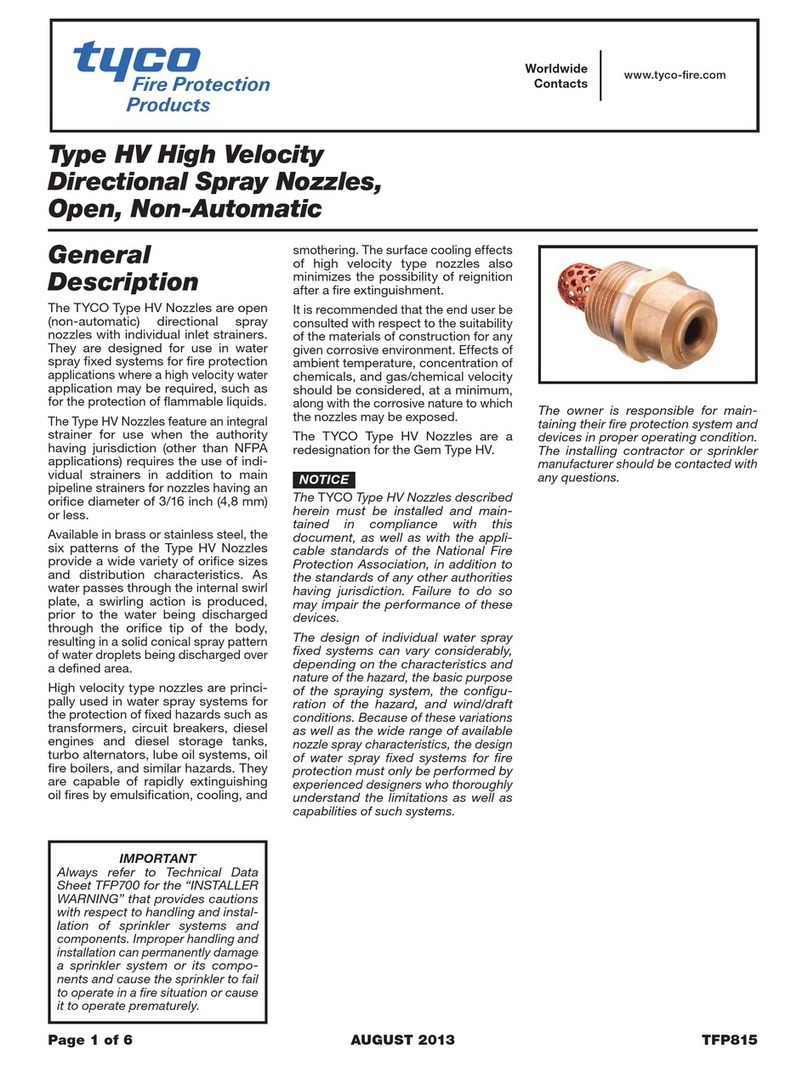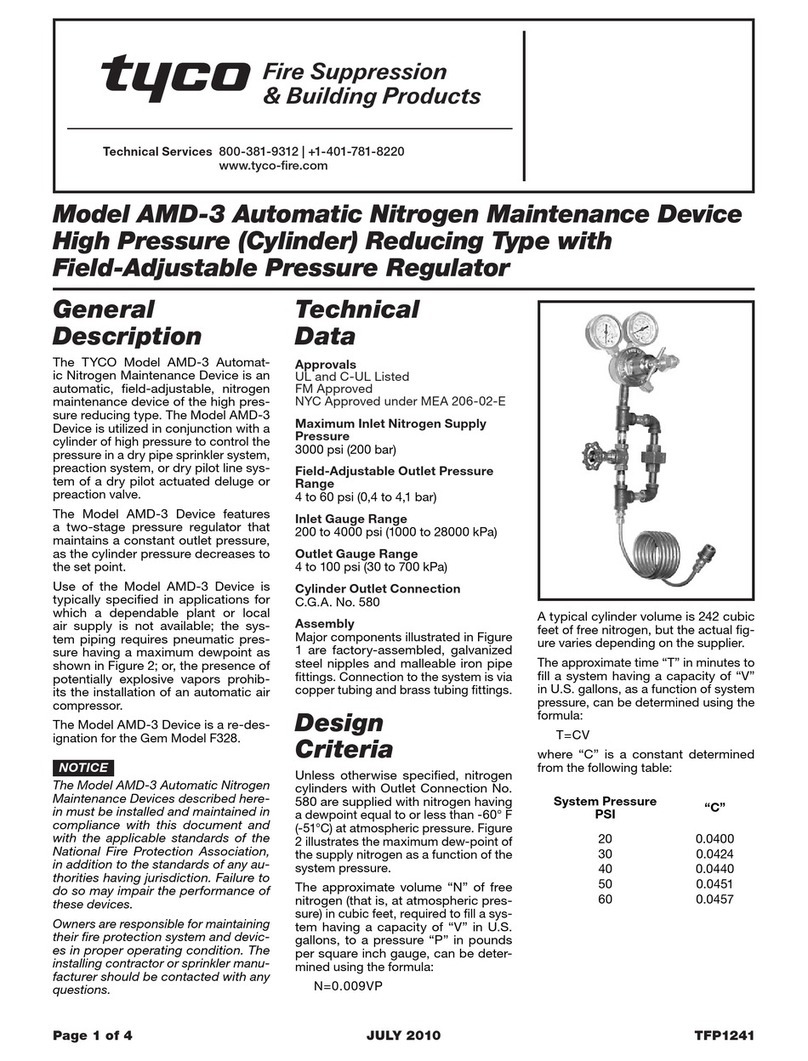
Rovalve S20
Installation and Maintenance Instructions
Tyco reserves the right to change the contents without notice page 9
9. Recommended long term storage procedure
The following are the factory's recommendations for storage procedures to retain maximum
product integrity during long term storage of 1 to 5 years.
Handwheel or bevel gear operated valves
A. Storage facility: The preferred storage
location is a clean, dry protected
warehouse. If valves are to be stored
outside, precautions should be taken to
keep valves clean and dry. Standard
packaging materials provided in valve
shipment can not be considered sufficient
for outdoor storage.
B. Equipment orientation: Valves may be
stored in the vertical or horizontal position.
C. Preparation for storage: Valves may be
stored as shipped, provided the above
Storage Facility and Equipment Orientation
instructions above are followed. If valve
packaging is altered or removed for
receiving inspection, repackage valve as
originally received.
D. Storage inspection: Visual inspection shall
be performed on a semiannual basis and
results recorded. Inspection as a minimum
shall include reviewing the following:
Packaging
Flange Covers
Dryness
Cleanliness
E. Maintenance: Maintenance shall consist of
correcting deficiencies noted during
inspection. All maintenance shall be
recorded. Contact factory prior to
performing any maintenance if valve is still
covered under warranty.
Cylinder operated valves
A. Storage facility: The preferred storage
location is a clean, dry protected
warehouse. If valves are to be stored
outside, precautions should be taken to
keep valves clean and dry. Standard
packaging materials provided in valve
shipment can not be considered sufficient
for outdoor storage.
B. Equipment orientation: The preferred
orientation for optimum protection is with
the valve fully opened and the cylinder in
the vertical position. This position gives the
best support to the cylinder rod and helps
reduces the chance of a "flat spot"
developing on the cylinder seals. An
acceptable alternate position for valves
with cylinder diameters of less than 6" is
with the cylinder in the horizontal position.
C. Preparation for storage: Valves may be
stored as shipped, provided the above
Storage Facility and Equipment Orientation
instructions above are followed. If valve
packaging is altered or removed for
receiving inspection, repackage valve as
originally received.
D. Cylinder storage
These cylinder storage instructions are not
intended to replace the instructions of the
specific cylinder manufacturer and are to
be used as a guide only. If specific
instructions are required, please contact
our office.
For storage of up to 3 years; Squirt a high
quality grade of hydraulic oil or synthetic
lubricant into the cylinder ports and operate
cylinder 6-12 times on a yearly basis.
For storage 3-5 years; lubricate as above.
Additionally, extend cylinder rod until the
valve is fully closed. Coat cylinder rod with
high quality heavy grease or synthetic
lubricant. Retract cylinder rod until valve is
fully open, drawing lubricant into rod end of
cylinder. Securely plug cylinder ports with
pipe plugs, if cylinder is not pre-piped to
control accessories. If cylinder is prepiped
to accessories, plug all input and output
ports of accessories.
E. Storage inspection: Visual inspection shall
be performed on a semiannual basis and
results recorded. Inspection as a minimum
shall include reviewing the following:
Packaging
Flange Covers
Dryness
Cleanliness
F. Maintenance: Maintenance shall consist of
correcting deficiencies noted during
inspection. All maintenance shall be
recorded. Contact factory prior to
performing any maintenance if valve is still
covered under warranty.
